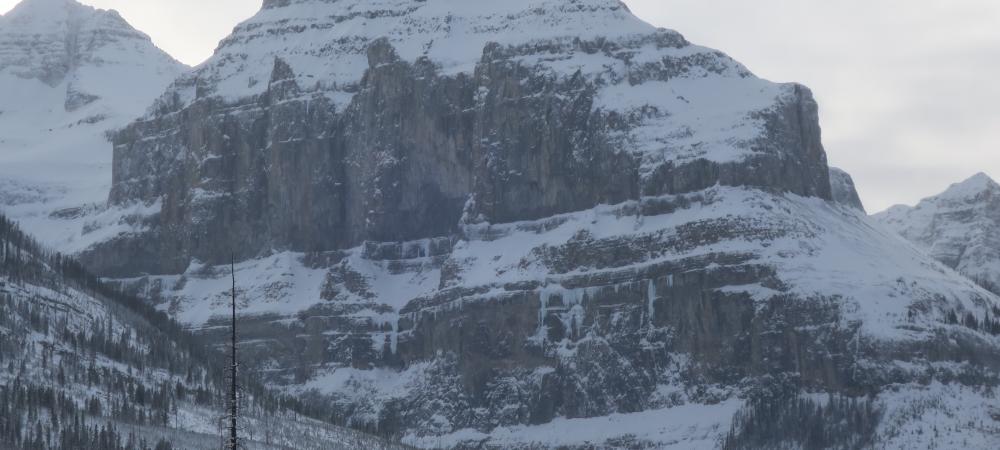
Ice Climbing Conditions Summary for the Rocky Mountains Dec 27, 2019
The ACMG is piloting conditions summaries for ice climbers in the Rockies to try and convey more specific avalanche information.
It was a wild past weekend of weather. An atypical storm threw down over 1 meter of warm, wet snow in some areas which settled into 30-60 cm slabs. Lots of big avalanches were seen earlier this week within the new snow, and stepping down into the deep, weak facets, depth hoar and crusts which are almost everywhere. In the past few days natural avalanche activity has quieted down which can be the trickiest time to try and “forecast” avalanche conditions on your intended ice climb.
Parks Canada did some avalanche control last Tuesday on Mt. Dennis in Field. The intent of doing avalanche control is to deal with avalanches that are big enough to hit the Field Back road, so avalanches large enough to effect climbers could still exist. There were good natural and explosive triggered avalanche results over Pilsner Pillar although there is still enough snow in the start zone to get over the climb. There wasn’t any avalanche activity over Carlsberg Column/Kronenbourg, and one explosive shot got put in below Guinness Stout with minimal results. I would feel ok considering these climbs over the next few days due to what was observed, unless there was any input from wind, snow, or rising temperatures.
Other large natural results earlier this week were a size 3 that went over Bourgeau Left and ended up in the creek below, and natural and explosive triggered size 3’s over Bourgeau Right which ran full path, taking out trees at the bottom of the runout zone. Reports from the Ghost River on Dec 26th were of wind slab formation on routes such as The Sorcerer and around Orient Point. These can often surprise people who think of the Ghost as a “no avalanche” zone.
With the generally benign weather pattern we are entering this weekend, natural avalanches are less likely, but I’m thinking about ice climbs that have either zero or minimal avalanche hazard unless I know they have slid completely. This close to a major storm it feels like there are too many variables in bigger terrain, and uncertainty around what it would take for an avalanche to initiate a new wind slab or the deep weak layers. I am avoiding larger terrain as a lot of my decision making would be left to chance, not facts.
Examples of “bigger” terrain to avoid in the near future would be climbs like Cascade, Rogans Gully, Polar Circus, Kitty Hawk or any other complex terrain feature which there a lot of! There’s also a lot of snow on sidewalls which could be small in size but could bury a climber in place, especially if the winds picked up. The deep layers will exist all winter long, but will ebb and flow as to how active they are. There’s no real right or wrong in these conditions but a good habit to get into is stacking the odds in your favor by paying close attention to those things you can know (like observable weather, weather station data, avalanche activity), and recognize and ponder your comfort level with the things you can’t know (avalanche conditions in a start zone, what it will take to slide). The culture is also changing for climbers to wear avalanche gear on any climb with avalanche hazard, which can potentially change the outcome of an incident if things go wrong.
Parks Canada and Kananaskis weather stations provide real time information on winds, snow, and temperature, and you can see the location and elevation of each station.
Parks Canada weather stations
https://avalanche.pc.gc.ca/station-eng.aspx?d=TODAY&r=1
Kananaskis weather stations can be accessed by going to avalanche.ca and zooming in on the map of that region.
Also check the avalanche bulletins at avalanche.ca which give an overview of conditions in a given area.
Have a good weekend
Stephen Holeczi
ACMG Mountain Guide